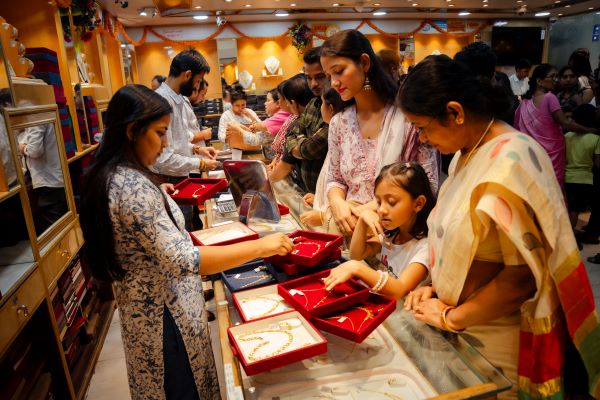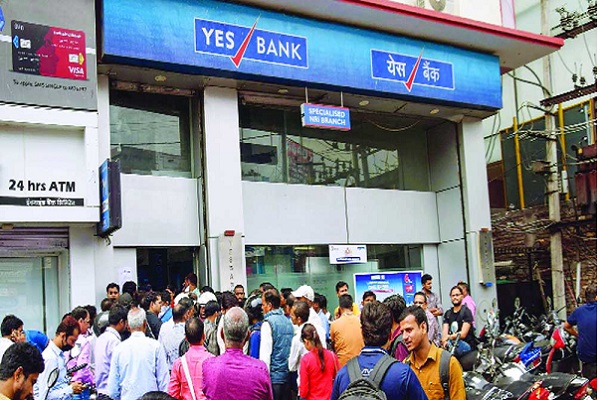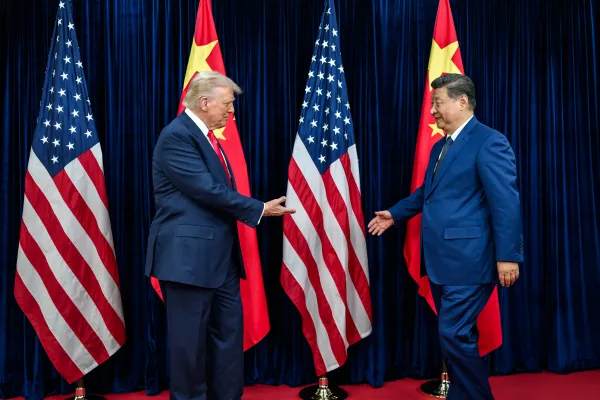.png)

Michael Patra is an economist, a career central banker, and a former RBI Deputy Governor who led monetary policy and helped shape India’s inflation targeting framework.
November 15, 2025 at 2:41 AM IST
Since time immemorial, India has been for the rest of the world a fabled land full of unimaginable riches, especially precious metals and stones. The history of India’s gems dates back over 5,000 years to the jewellery worn in the Indus Valley Civilisation, which was studded with agate, amethyst, and carnelian.
India was the first country in the world to mine diamonds, with the earliest discoveries traced back to around the 4th century BCE. India remained the sole supplier of diamonds for over 2,000 years.
Ancient South India was a major hub for exporting gems like diamonds, amethyst, and onyx to the Roman Empire, with the port of Muziris being a key trade centre. India’s gemstones were used in everything from royal jewellery and religious offerings to architectural marvels like the Taj Mahal.
Ancient Indian texts linked gems to mythology and cosmic energies. The Mughal era saw an enormous increase in the use of gemstones for ornamentation and as symbols of power and wealth. Emperors like Akbar established vast treasuries for precious stones and created the Navratna (nine gems) ring, which was believed to channel cosmic energies.
The decline of India’s gems and jewellery industry began with the British East India Company, the most famous example being the Koh-i-Noor diamond, which was acquired by the Company after compelling the young Sikh emperor Duleep Singh to hand it over.
Today, India’s historical dominance may have waned, but it remains the fifth-largest global exporter of gems and jewellery, with a share of approximately 5% of the global total. It is still the world's largest exporter of cut and polished diamonds, with a share close to a third of the global market, and the largest exporter of silver jewellery and synthetic stones, accounting for over a third of the world's exports.
India is also a leading exporter of gold jewellery. According to the Gems and Jewellery Export Promotion Council, the Indian gems and jewellery sector accounts for about 7% of India's GDP. In the financial year gone by, it constituted just under 7% of total merchandise exports. It is a major employer, providing jobs to close to five million people. Surat alone accounts for nearly 90% of the world's diamond processing and directly employs about 200,000 workers.
Trade Shifts
The United States is India's top export destination for gems and jewellery, absorbing close to $12 billion, followed by Hong Kong and the UAE. Other key export markets include Belgium, Israel, and Thailand.
It is in this context that the Trump administration’s decision to impose a 50% tariff on gems and jewellery imports from India is a cruel blow, veritably below the belt— threatening jobs, denting global competitiveness, straining bilateral trade ties, and even putting the $117 billion US jewellery industry at risk.
The effective duty goes up to 55%, including the most-favoured nation duty on jewellery which was applicable even before the tariff action. The Gems and Jewellery Export Promotion Council apprehends that exports to the US could fall by over 75%, impacting polished diamonds, jewellery, and coloured gemstones. In anticipation, exporters have front-loaded shipments to the US by sending sufficient stock for September, October, and November before the increased tariffs kicked in, but considerable uncertainty prevails about the prospects after November.
A major concern is that competing manufacturing hubs such as Turkey, Vietnam, and Thailand continue to enjoy significantly lower tariffs of 15%, 20%, and 19% respectively, making Indian products relatively less competitive in the US market.
This formidable challenge notwithstanding, India’s gems and jewellery industry remains resilient. The 41st edition of the India International Jewellery Show or IIJS Premiere 2025, the world’s largest jewellery fair, held in Mumbai during July-August 2025, was a testament, with projected business ranging from ₹700 billion to ₹1 trillion.
India’s domestic gems and jewellery market—currently pegged at $85 billion—is expected to grow to $130 billion in the next few years. This domestic growth offers some cushion, particularly for the diamond sector. The GJEPC is also actively exploring new markets and fresh avenues in emerging regions and diversifying India’s export destinations. Moreover, the possibility of trade rerouting through low-tariff destinations such as Mexico, Canada, Turkey, the UAE, or Oman cannot be ruled out.
Every cloud has a silver lining, though. The India-UK free trade agreement includes the removal of tariffs on gemstones and jewellery imported into the UK from India. The category, which includes natural or cultured pearls, precious or semi-precious stones, precious metals, and imitation jewellery, currently attracts duties of up to 4%. The FTA is widely believed to be a game changer for both countries. According to the GJEPC, the UK accounts for a little less than 2% of India’s gem and jewellery exports, with the top commodities being gold jewellery, polished diamonds and silver jewellery. It is widely expected, however, that the value of India’s gem and jewellery exports to the UK will grow from a little less than $1 billion to at least $2.5 billion over the next three years, and it will have demonstration effects on other markets, both active and potential.
The removal of duties will mean that potential buyers among the 1.9 million people of Indian ethnicity living in England and Wales will no longer fly to India to shop for jewellery but will purchase in the UK. Already, new gold and diamond showrooms are being launched in Birmingham, Leicester and East London. An increasing number of Indian retailers are expressing interest in exploring the UK market following the trade agreement.
Although India will continue to apply most-favoured-nation tariffs on imported finished jewellery from the UK, there are also benefits for UK jewellers. The removal of duties in the UK will make it easier to bring in samples and will also make inputs manufactured in India cost-effective.
This makes a big difference for small businesses. London-based jewellers are being flooded with enquiries from Indian gemstone dealers and manufacturers, and they are ready to pass on any savings to customers in the highly competitive jewellery market in the UK, which is poised to see an influx of Indian brands. The trade agreement also brings opportunities for knowledge-sharing, a two-way dialogue, and collaboration between British designers and Indian manufacturers or retailers on pieces for the Indian market, especially high-end consumers who savour British luxury.
As the famous inventor Alexander Graham Bell wrote, "When one door closes, another opens; but we so often look so long and so regretfully upon the closed door, that we do not see the one which has opened for us."




